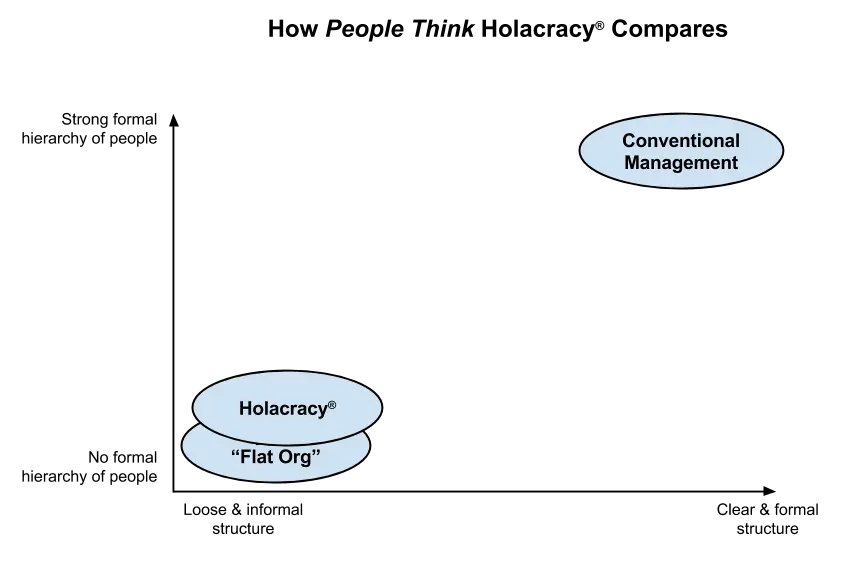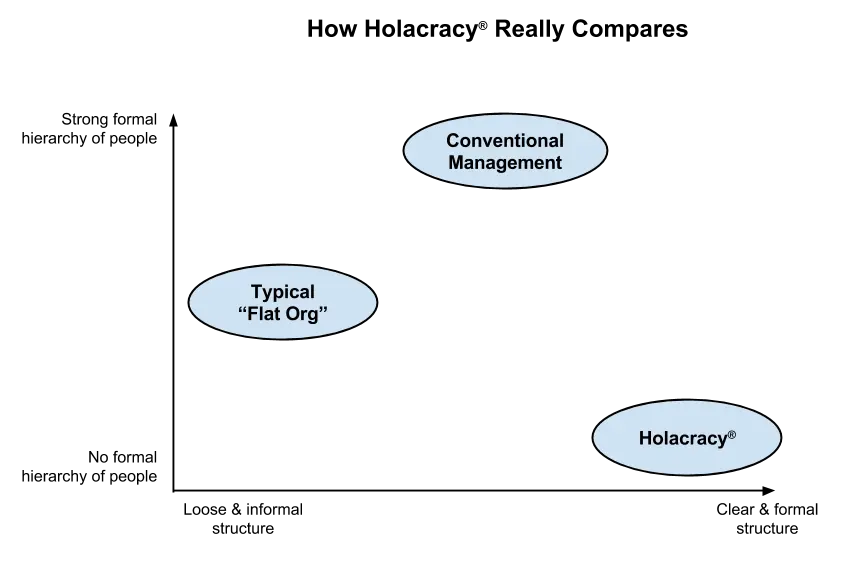Holacracy vs. Hierarchy vs. Flat Orgs
Why Holacracy doesn't fit these boxes.
Why Holacracy doesn't fit these boxes.
Yesterday an article showed up in my Twitter feed with the nice title of “The GitHub Debacle: Why Holacracy is Bullshit”. Since GitHub doesn’t use Holacracy, my first reaction was: what does any of this have to do with Holacracy? I contacted the author who eventually acknowledged that the association with Holacracy was an error.
I realized that the article reflects a widespread lack of clarity about where Holacracy stands with regard to traditional hierarchies AND flat organizations. To be fair, HolacracyOne has work to do to present Holacracy in an easily digested format. And I understand that in the absence of something readily available, people will fill the gap with whatever they already understand — even if it has nothing to do with Holacracy.
In response to that article mentioned above and as general clarification, I want to focus this article on two points, and make sure I drive them home:
Since the media began focusing on Zappos’ use of Holacracy earlier this year, the term has become corrupted to refer to any unconventional form of management. In fact, Holacracy® is a specific system, with specific rules documented here. Zappos and Medium are using Holacracy. On the other hand, companies like Github, Valve, W. L. Gore, Morning Star, Spotify, and other unconventionally run companies are not.
Holacracy is as far from “flat organization” as it is from “conventional management hierarchy”. It’s neither of those two options. To understand what it means, we first need to differentiate between “hierarchy” and “structure”. The absence of hierarchy does not necessarily mean no structure.
Here’s how people often think Holacracy compares to “conventional management hierarchies” and typical “flat orgs”.

Many folks don’t differentiate even between different types of flat structure. They can range anywhere from Valve’s well documented culture-driven structure to complete and utter chaos.
So here’s a more accurate view of how Holacracy compares with other systems.

Note a few points I’m making with this chart:

This quick comparison only aims to show there’s more to Holacracy than just “no managers”. Many are surprised to discover that Holacracy provides more structure, fewer places to hide, and requires more rigor, than conventional management hierarchy.
Although this post may leave you with more questions than answers about Holacracy, I hope it made you curious to learn more. If so, watch this 45-min introductory video to get a more comprehensive overview. (UPDATE: I updated the video URL to a more recent version)
I’ll leave the final words to Ev Williams, co-founder of Twitter and Medium, who describes Holacracy in these terms:
“Holacracy is the opposite of the cliché way to run a startup. People think “freedom, no job description, everybody does everything, it’s totally flat, and that’s cool because we’re all down with those rules”. But actually that creates tons of anxiety and inefficiency, and various modes of dysfunction, whether we have to build consensus around every decision, or I’m gonna do a land grab for power… People romanticize startup cultures, but I know it’s fairly rare that people in startups say “this is it, it is amazing and everybody is super-productive and going along”. So in Holacracy, one of the principles is to make the implicit explicit — tons of it is about creating clarity: who is in charge of what, who is taking what kind of decision — and there is also a system for defining that, and changing that, so it’s very flexible at the same time.” (source)
To learn more about self-management, join a community of pioneers and check out our e-courses → Self-Management Accelerator